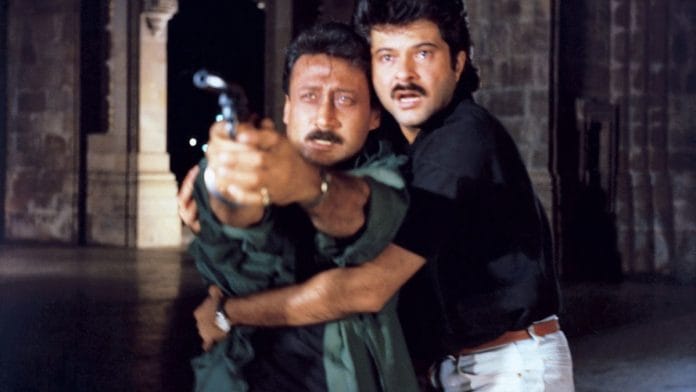Parinda is often credited for introducing elements of realism onto the big screen for the first time in Bollywood. But what happened during the shooting of the climax — an accident — brought the makers a little too close to reality.
In Vidhu Vinod Chopra’s 1989 film, when Nana Patekar is shown engulfed in flames, there is a look of terror on his face. He isn’t acting. Patekar was burning for real after a fire built on the film set went out of control. The actor suffered injuries that left him bedridden for six months and away from work for a year.
Patekar, who was originally approached for the role of Kishen (played by Jackie Shroff), portrayed Anna, an underworld don. The film also stars Anil Kapoor as Karan (Kishen’s brother) and Madhuri Dixit as Paro. Kishen works for Anna, while Karan dreams of a peaceful life with Paro. After a friend’s assassination and a string of betrayals, Anna kills Karan and Paro on their wedding night, which sets Kishen on the path to revenge.
Paved the way for realism
Unlike other films released at the time such as Maine Pyaar Kiya, Chandni, Ram Lakhan and Vardi, Parinda focused on complex human relationships, moral dilemmas, and socio-political realities. It set a new benchmark for storytelling.
The film depicted a new side of Mumbai — the underworld with raw authenticity, not the kind of glamorising seen previously in films such as Deewar (1975). And it became the inspiration for several films in the 1990s and early 2000s that attempted to capture the underworld with a tinge of reality. Abhimanyu (1991), Kabhi Na Kabhi (1998), Satya (1998), Ghulam (1998), and Vaastav: The Reality (1999) to name a few.
Parinda introduced gritty realism and intense storytelling to mainstream Bollywood.
The film sees liberal use of natural lighting. For indoor scenes, the makers have used candles. The approach gives Parinda a cinematography that looks rustic yet with finesse. This may seem common practice today, but that was not the case 35 years ago.
“How could you make something so rustic, so grungy at the same time so beautiful, without being glossy? Parinda started a style that still hasn’t gone out of fashion,” said filmmaker Rakeysh Omprakash Mehra in a 2019 Film Companion article.
The makers even covered the lights with tracing paper to make it look softer. Cameraman Binod Pradhan said his main inspiration for Parinda came from Gordon Willis’ shadowy cinematography in The Godfather (1972).
Also read: Raj Kapoor was awed by the global fame of Pather Panchali. He made Jagte Raho in Bangla
‘Kill Kishen not Karan’
Chopra made Parinda when he was financially struggling. The film’s budget was just Rs 12 lakh.
When he took his film to the distributors, he was offered an opportunity to earn easy bucks. Distributors were ready to give him another Rs 10 lakh to change the ending of Parinda by having Jackie Shroff’s character killed instead of Anil Kapoor and Madhuri Dixit’s.
But Chopra declined the offer, explaining his decision in an interview with Galatta Plus: “I refused because it would contradict the film’s message that violence begets violence. They didn’t understand, and I didn’t do it. Parinda was an honest filmmaking.”
The film went on to make Rs 9 crore at the box office.
Parinda won several awards in India. It was also submitted as the country’s official entry to the 1990 Oscars in the Best Foreign Language Film category. However, it wasn’t nominated.
Composer RD Burman’s music further added depth to the film’s drama. The song ‘Tumse Milke’, featuring Kapoor and Dixit, resonates with music lovers even today.
The song is inspired by Leo Sayer’s single ‘When I Need You’ (1977). It also marked the debut of Shantanu Mukherjee, now famous as Shaan. He was only 15 years old at the time, and sang one line, ‘Kitni Hai Pyari Pyari Dosti Hamari’.
In 2015, Chopra made a Hollywood film called Broken Horses, which was a remake of Parinda. Though the filmmaker dismissed it being a copy, the plots of the two films were quite identical.
In Bollybook: The Big Book of Hindi Movie Trivia, Dipakriti Chaudhuri writes that Parinda’s tagline described it as “the most powerful film ever made”. Nearly 35 years after its release, the makers can surely bask in the confidence and the prediction they made. The film was indeed powerful.
(Edited by Ratan Priya)






